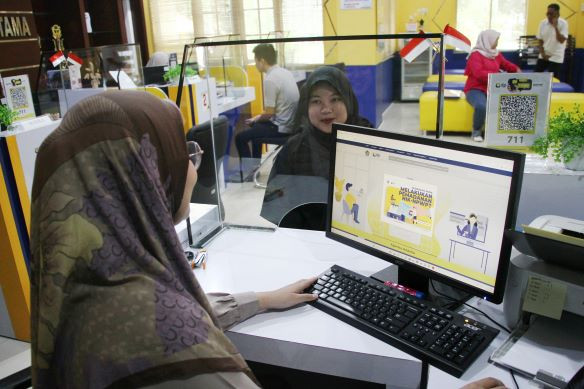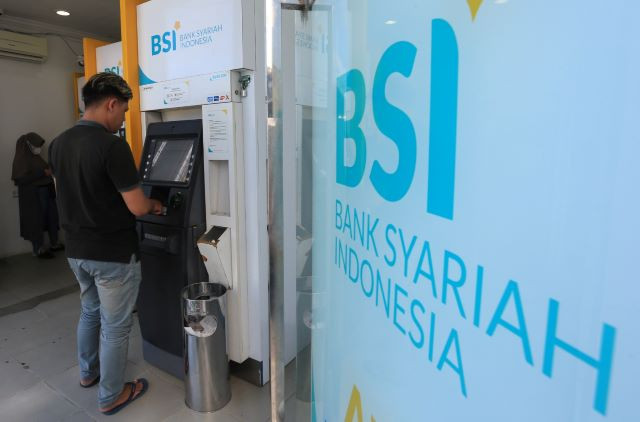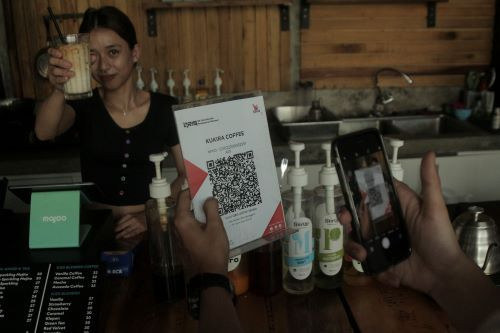Three endings to pandemic story: Where is Indonesia in the picture?
The lack of discipline among Indonesians in performing social distancing does not help the situation. At this point, we can only foresee a dark ending to our pandemic story.
Change Size
 A resident stands guard at the entrance to the Bukit Pasir Putih residential complex in Depok, West Java, on March 31. Residents closed access to the complex in the wake of the COVID-19 outbreak. (JP/Riand Alfiandy)
A resident stands guard at the entrance to the Bukit Pasir Putih residential complex in Depok, West Java, on March 31. Residents closed access to the complex in the wake of the COVID-19 outbreak. (JP/Riand Alfiandy)
In the midst of the global chaos resulting from the coronavirus outbreak, many have wondered about the ending to this pandemic.
While it remains blurry at this point, we can imagine three possible endings to this global health crisis, and based on the current situation we can also predict how the story will unfold for Indonesia.
First is complete containment. In this scenario, countries would successfully identify all positive cases and separate them from the non-infected. By doing this, the virus is isolated and will then be extinct. End of story. Thus, if done right, this would be the fastest ending to our pandemic story. However, at this point, complete containment has become more challenging as the spread of COVID-19 has become too pervasive. As a comparison, one of the most successful cases of virus containment was SARS in 2002, with around 8,000 cumulative cases spreading across 26 countries. COVID-19 cases already top 1 million across more than 100 countries.
So far, China and Singapore are the best examples of complete containment scenarios thanks to draconian government regulations and disciplinary actions.
Second is herd immunity, which is becoming more and more mainstream these days. If it remains true that reinfection is nearly impossible, the idea then is that most of the population get infected, recover, and thus develop immunity to the virus.
The question is how many people would need to be infected and recover? Massachusetts Institute of Technology (MIT) estimates that it would require around 50 percent of the population to be immune to develop herd immunity against COVID-19. That is a lot of people to take care of.
Now, how can we ensure that those who are infected will recover instead of dying? This is where the idea of flattening the curve comes into the equation. To limit the number of fatalities, a population needs to spread the number of cases that will occur over a longer period of time (by slowing down the infection rate through social distancing and self-quarantine measures), while concurrently enhancing the capacity of the healthcare system.
MIT scholar Joscha Bach mentioned that dampening the spread to a level that is compatible with the US’ current medical system capacity would mean spreading the length of the epidemic out over more than a decade. Imagine dampening the spread to a level of Indonesia’s current medical system capacity.
Third is vaccine development. This scenario remains the most viable now as once the vaccine is mass produced and distributed, the world will undoubtedly recover. Nevertheless, experts predict that it will take around 12 to 18 months (early to mid-2021) until a vaccine is ready.
Let’s assess where Indonesia is likely to end up.
As discussed earlier, complete containment would be the fastest ending to this story. However, this scenario requires an extremely disciplined society and a strict government policy. An extreme lockdown (not partial) in China has allowed it to contain the virus and achieve zero new cases in a single day. However, President Joko "Jokowi" Widodo has declared that lockdown is not the route Indonesia is taking due to several political and economic considerations.
Singapore's extreme chase down has allowed the city-state to isolate the virus by strictly separating the infected from the non-infected. However, this will also not likely be our government’s option due to the country’s democratic values and concern over citizen privacy. Looking at this, the complete containment scenario is very unlikely to happen for Indonesia.
This leaves us with two remaining scenarios, herd immunity or the development of a vaccine. As previously discussed, waiting for herd immunity while maintaining a low number of fatalities might take a multitude of years, and a vaccine would probably have been developed by then. Hence, the most likely ending to our story is the vaccine development scenario.
This means that our pandemic story will end in 12-18 months, or sooner depending on the discovery of the vaccine. However, what happens until then is what truly determines the ending to Indonesia’s pandemic story.
Currently, the COVID-19 death rate in Indonesia is reported to be around 9 percent, one of the highest in the world. This can only mean one thing: our healthcare system is not prepared to face the current and coming wave of the virus outbreak. In addition, the lack of discipline among Indonesians in performing social distancing does not help the situation. Thus, at this point, we can only foresee a dark ending to our pandemic story.
Nevertheless, there is always a plot twist in every story. If the government can manage this right and put up a good fight, minimum damage can be achieved. Serious measures to improve our healthcare capacity need to be taken. Standardization of treatment protocol, the right preparation of medical facilities, ensuring a sufficient supply of consumables, medical instruments and medicines, as well as securing pools of medical talent are prerequisites to twist the plot of our story
As much as the government can do, all this effort would in no way be optimal without the support of every one of us. It is of paramount importance that we contribute to minimizing the number of casualties by slowing down the spread of the virus through keeping ourselves at home and minimizing social interactions as much as possible. Let’s be the plot twist to our pandemic story.
***
Strategy consultants at a company based in Jakarta









